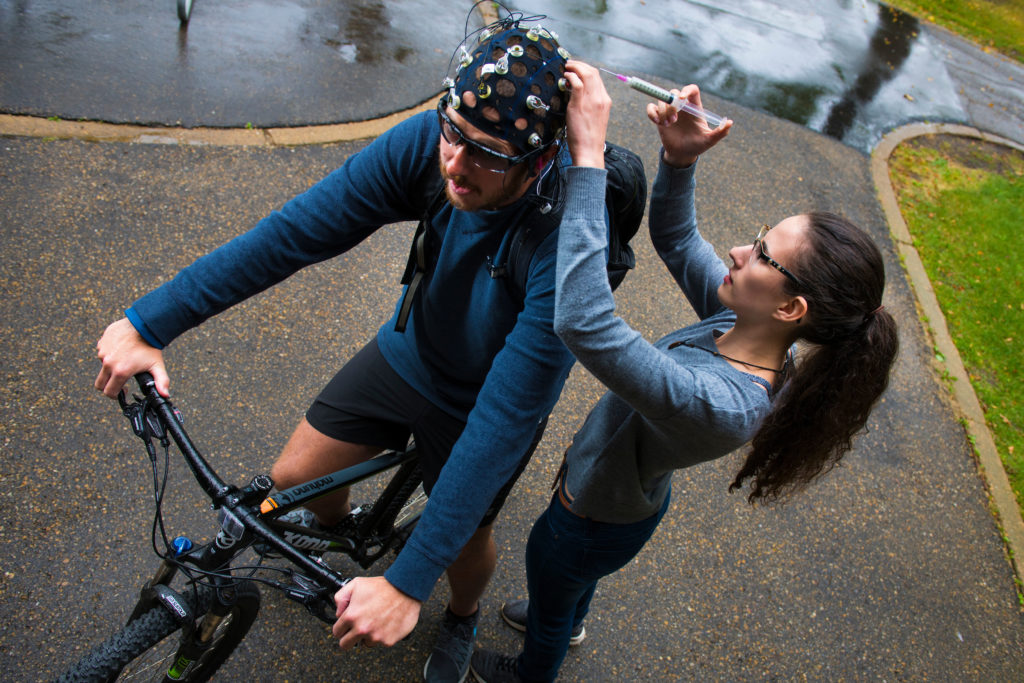 Supplied by John Ulan
Supplied by John UlanHave you ever wondered if there’s a difference between indoor or outdoor environments on the brain? Or, if background noise has any affect on brain waves?
A recently released pair of research studies at the University of Alberta explored the relationship between brain activity and outdoor background noise. Joanna Scanlon, research lead for the study, completed the work while being a graduate student in the psychology department.
In order to examine these questions the scientists established a baseline for how our brains respond as we complete tasks in different environments by changing background noises. Experiments for the first study were completed outside the lab with an individual biking outdoors.
According to Scanlon, they found that any time there is background noise, our brain actively works to filter it out.
“We were able to change brain activity during a cognitive task in a noticeable and reproducible way, simply by playing outdoor sounds in the background,” she said. “These findings show that our environment affects how we perceive the world around us — and means that much of what we know about the brain is oversimplified since it has primarily been researched in a laboratory setting.”
The second study involved a participant using headphones with controlled and quieter background noise. The key points from the second study included understanding the different reactions of the brain in varying environments and understanding that the outdoors has the biggest effect on the brain.
Taking research out of the lab beneficial for results, says Scanlon

While only beginning to explore these questions, the studies show a baseline for how our brains respond while we complete tasks in varying environments.
Referring to the various outcomes of study’s impact, Scanlon said, the findings can lead research into various directions. One direction the study could inform is neurotechnology. According to Scanlon, the technology is very useful and accessible, however, it is only usually studied in a laboratory setting.
“You have to understand how the brain is reacting in the outdoors and the indoors,” she said.
In her view, the majority of experiments isolate people from their natural environment, making it hard for other studies to then use their findings for other environments.
“There are different mechanisms in different environment,” she added. “Don’t be like someone told me to study here even though the environment doesn’t work for you.”
For Scanlon, her study shows an important need for neuroscience research to examine subjects outside the lab so as to not isolate subjects from their day-to-day environment.
“Always be conscious about how you are isolating the subject from their environment,” she said. “This can limit findings as lab settings can sometimes be unrealistic.”



